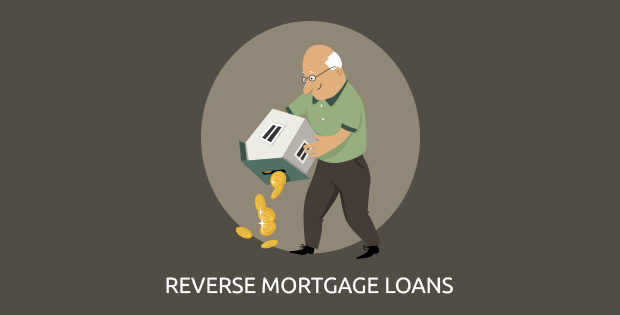
- About Us
- OUR OFFERINGS
- CALCULATORS
- RESOURCE CENTRE
-
Quick Links
- Existing Customers Benefits
- Become a Partner
- Pre-Approved Projects
- Home Loan App
- Blog
- CSR
- Locations
- Roi Switch Policy
- Co-Lending Policy
- Co-Lending Partnerships
- Customer Sensitization Program
- ROI Range
- Borrower Education - SMA/ NPA classification
- Borrower Awareness - RBI Ombudsman Scheme
- Borrower Awareness - procedure for handover of property documents
- NEWS CORNER
-
INVESTOR RELATIONS
- Financial Reports
- Investor Presentations
- Annual Reports
- Notices
- ESG Profile
- IEPF
- Investor Call Transcript
- Corporate Announcement
- Public Issue of NCD'S
- Qualified Institutional Placement
- Investor Relations Contact
- ISO CERTIFICATIONS
- Forms for Shareholder KYC-PAN-Nomination update
- Credit Ratings
- Statutory Advertisements
- ODR Portal
- Rights Issue
- Sustainable Financing Framework
- Disclosures under Regulation 46 of SEBI LODR
- CONTACT US
- Login
 Apply
ApplyOnline

India's 1st Completely Online Home Loan!
-
e-APPLY
-
e-SANCTION
-
e-DISBURSE
Start your eHome Loans Process Now!
Apply OnlineOffloading Your Home Loan Liability Sooner

- Home Loans Guide ,Home Loan Transfer Guide ,Loan Against Property Guide ,NRI Home Loans Guide
- Apr 25, 2018
- VIEWS: 8296
Whether you are buying a mid-sized house or a premium property, chances are high that you would take a home loan. The best time to take a home loan in India is while you are still young, so that you can pay off your home loan by the time you retire. In all probability, if you are a salaried employee or a self-employed professional, you wouldn’t like to carry the burden of your home loan for too long. There are several ways in which you can pay your housing loans faster so that you can focus more on enjoying the comfort of your home rather than enduring the headache of paying off your home loan.
For example, if you are going in for a property in an upscale area in one of the metros, you could end up taking a home loan of as much as Rs 25,00,000. If the tenure is 15 years at an interest rate of 8.40%, then the equated monthly instalment or EMI would work out to Rs 26,366. Just think for a moment. Carrying a burden of paying back an EMI of Rs 26,366 for 15 years would give you many sleepless nights. However, not necessarily if you are one of the many highly paid young professionals whose yearly income runs into crores. Even under such circumstances, you would like to look into ways in which your EMI liability could be paid off faster.
There are at least four ways in which you can reduce your EMI burden faster. The first is you can pay a higher EMI. This allows you to get rid of your principal faste, thus saving you the burden of paying interest rates for a longer time. The second option is going in for a partial pre-payment. This gives you twin benefits as this reduces the principal amount and also offers reduced interest rate with the passage of time. The third option is to increase your EMI with the increase in your income. This option enables you to channelise your surplus faster by paying back your EMI faster. The fourth option is to transfer your loan to a NBFC which charges a lower interest rate. In this case, a NBFC transfer fee may be applicable, and there might also be a processing fee.
At Indiabulls Home Loans, the process of availing or transferring a home loan has been made easier by many useful tools. With the simple Home Loan EMI Calculator, you can calculate the EMI that you will be required to pay for your home loan. This housing loan EMI calculator will thus help you approximate your financial requirements based on your home loan amount, home loan tenure and home loan interest. With the Housing Loan Eligibility Calculator, you can calculate your home loan eligibility. It will help you to calculate the amount of housing loan that you are eligible for, based on the housing loan tenure and housing loan interest.
With the Tax Benefit Calculator, you can determine the tax saving opportunity that one can be eligible for on their home loan. Every principal and interest payment made against your home loan can be claimed for deductions in your income tax. Stamp Duty is the tax placed on your property documents during the sale or transfer of the property. It is levied across India at different rates. With our stamp duty calculator, you will know the exact amount that you will be required to pay as stamp duty in any state or city.
At Indiabulls Home Loans, you can initiate home loan balance transfer to avail lower interest rates, save more with lower EMI’s, or even top-up on your home loan amount. You can also avail balance transfer on Loan Against Property.
Related Articles:
- Ways to Repay Your Home Loan Faster
- Prepaying a Home Loan – Good Idea or Bad
- 10 tips for a hassle free home buying experience
The post Offloading Your Home Loan Liability Sooner appeared first on Indiabulls home loans.

Top up home loan vs personal loan a comparison to determine the better choice for loans
Taking on a loan of any kind is a financial responsibility. It is a debt that needs to be repaid, in full, based on the tenure chosen by the borrower. Most banks, housing finance companies and non-banking finance companies offer a myriad of loans to finance the different needs of customers.
- Home Loans Guide
- Jul 23, 2019
- VIEWS: 8942

MCLR in Home Loan
The interest rate is one of the most important components of a loan, especially in the case of a high-value loan that lasts for 2 decades or more; the home loan.
- Home Loans Guide
- May 24, 2019
- VIEWS: 6697

Types of Home Loan Charges
Most people fulfil their wish of becoming homeowners by taking out a home loan. It is the easiest way to afford a property as one can pay for the house in monthly instalments.
- Home Loans Guide
- May 24, 2019
- VIEWS: 8010
No Comments
Subscribe
Most Viewed Blogs
Categories
- Home Loans Guide 125
- Home Renovation Loan Guide 3
- Home Loan Transfer Guide 14
- Home Extension Loans Guide 1
- Loan Against Property Guide 28
- Home Loan Interest Rates Guide 2
- Others Guide 8
- Home Decor & Lifestyle Guide 5
- Plot Loan Guide 3
- PMAY Guide 5
- Uncategorized Guide 1
- NRI Home Loans Guide 5
- Financial Resolutions Guide 1
- New Year Resolutions Guide 1
Archives
- Mar 2020
- Jan 2020
- Nov 2019
- Jul 2019
- Jun 2019
- May 2019
- Apr 2019
- Mar 2019
- Feb 2019
- Jan 2019
- Dec 2018
- Nov 2018
- Jul 2018
- Jun 2018
- May 2018
- Apr 2018
- Mar 2018
- Feb 2018
- Jan 2018
- Dec 2017
- Nov 2017
- Oct 2017
- Sep 2017
- Aug 2017
- Jul 2017
- Jun 2017
- May 2017
- Apr 2017
- Mar 2017
- Feb 2017
- Jan 2017
- Dec 2016
- Nov 2016
- Oct 2016
- Jun 2016
- Apr 2016
- Mar 2016
- Feb 2016
- Jan 2016
- Dec 2015
- Nov 2015
- Oct 2015
- Sep 2015
- Aug 2015
- Jul 2015
- Jun 2015








